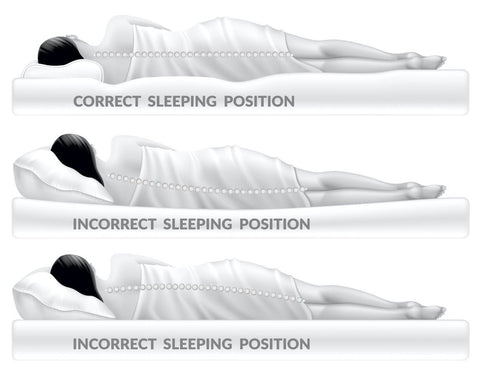For a Better Night's Sleep: Ergonomics of Our Mattresses

Which Type of Mattress is Best for Sleeping?
It’s not just the amount of sleep that matters, but also the quality of sleep. If you feel tired even after a long night's rest or wake up with back pain or neck tension, it’s time to evaluate your mattress.
An ergonomic mattress plays a crucial role in promoting healthy sleep. Mattresses that are too soft or too firm may cause you to toss and turn throughout the night, leading to poor rest. In contrast, a mattress that provides the right amount of spinal support helps you wake up refreshed. The ideal mattress should offer both pressure relief and support, ensuring that your spine remains relaxed as you change positions during the night. With proper spinal alignment, your body—including your intervertebral discs—can regenerate more effectively, leaving you feeling well-rested every morning.How to Choose the Best Mattress?
The primary function of your bed is to provide support for your body while you sleep, especially when your muscles are relaxed and no longer supporting your spine. Therefore, choosing the correct mattress firmness is essential — it shouldn’t be too soft or too firm. The right mattress will maintain the correct position of your spine, allowing for optimal body alignment and support throughout the night.

Why Are Midsummer Milano Mattresses Ergonomic?
At Midsummer Milano, our mattresses are crafted using a variety of natural materials: warm and cozy for winter, fresh and breathable for summer. Our skilled Italian artisans expertly combine these materials to support your health and ensure the ultimate sleep experience.
The core of our mattresses is made with high-quality springs. Based on your weight and preference, you can choose between firm, medium-firm, and soft mattresses. For firmer mattresses, we use springs with three zones, offering softer support around the shoulders and pelvis for proper spinal alignment. Softer mattresses feature seven zones, designed to follow the contours of your spine for optimal support. Even in our single-zone mattresses, we use springs with varying diameters to keep your spine properly aligned, making our mattresses the ideal solution for back pain relief.

Choosing a Mattress Based on Body Mass Index (BMI)
To find the perfect mattress that will last for years, you should consider your Body Mass Index (BMI), which consists of your weight and height. People with higher BMI generally need a firmer mattress, while those with lower BMI may prefer a softer mattress for comfort. The position you sleep in also affects which mattress firmness is best suited for you.
Use our simple BMI calculator to help you determine the most suitable mattress for your needs.

What is the Best Sleeping Position?
Your sleeping position is another important factor in choosing the right mattress firmness. While your BMI provides a general guideline, your sleep position will help fine-tune the choice:
- Side Sleepers: Should stick to the firmness recommended by their BMI. This helps support the spine while preventing pressure on the shoulders and hips.
- Stomach Sleepers: Should opt for firmer mattresses. Soft mattresses cause the body to sink, putting excess pressure on the spine. A slightly firmer mattress helps maintain spinal alignment.
- Back Sleepers: Should choose a mattress that’s slightly firmer than recommended by their BMI to ensure proper support for the spine.
